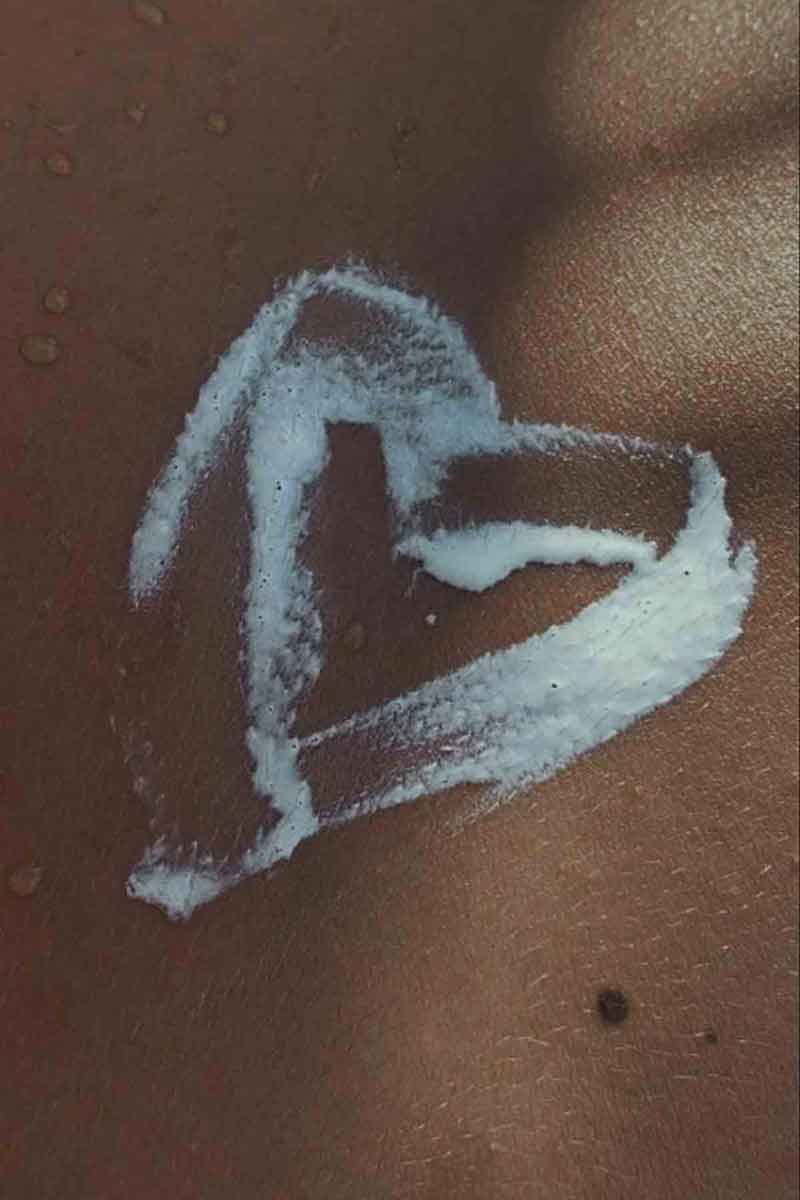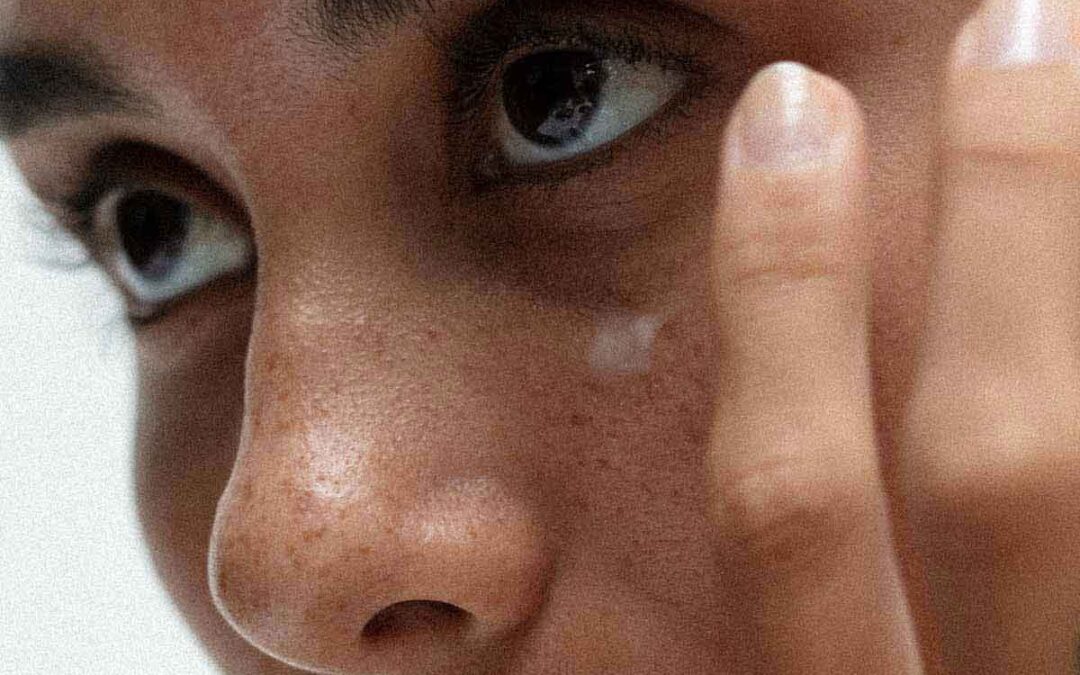Acne is a skin condition that affects millions of people worldwide. It is easily identifies by the presence of pimples, blackheads, and whiteheads. It is mainly present in aereas of the body with a high density of oil glands: the face, neck, chest, and back.
Understanding what are the acne causes is crucial to finding an effective treatment and learning how to prevent it. In this guide backed with research, we will delve into the science behind acne, understanding the diverse factors that contribute to its development.
What is Acne?
Acne occurs when our hair follicles become clogged with oil, dead skin cells, and/or pollution leading to the growth of bacteria and subsequent inflammation of the area. There are different types of lesions like comedones, papules, pustules, nodules, and cysts. Its severity can go from mild to severe, depending on the number and type of lesions present in the skin.
It’s a condition often linked to adolescence where hormonal changes can increase oil production in the skin leading to the formation of acne. It is important to mention that increased oil production is not only caused by hormonal changes nor it is the only factor causing acne.
A study by the European Academy of Dermatology and Venereology conducted in 2011 found several links between acne and diet. Yet, the root causes of acne may also reside in genetic or environmental factors.



Types and Classification of Acne
Knowing the various types and classifications of acne can assist in identifying the appropriate treatment approaches, as acne can manifest in different forms, each with its own set of characteristics. Some of the common types of acne include:
Comedones
Non-inflammatory acne characterized by clogged hair follicles, which can be open (blackheads) or closed (whiteheads). For comedones an exfoliating agent can help unclog the follicles.
Papules
Small, raised, inflamed lesions on the skin. For papules, an anti-inflammatory agent may reduce the visibility of the lesions.
Pustules
Similar to papules but filled with pus. For pustules, an antibacterial component can help reduce the reproduction acne-causing bacteria.
Nodules
Large, painful, solid lumps beneath the skin’s surface. For nodules, a balanced mixture of astringent and anti-inflammatory compounds can help shorten their presence on the skin
Cysts
Deep, pus-filled, painful lesions that can cause scarring. For cysts, consider a product that controls bacterial growth, has an anti-inflammatory agent to reduce the pain and a skin-regenerative component to lessen the possible scarring.
While I’ve been working with acne-prone skins for years, it’s important to remind you: always consult your skin professional for the correct identification of the lesions and to address the best treatment available for you. Don’t just Google things on your own.
The Impact of Genetics on Acne-Prone Skin:
Acne susceptibility can be influenced by genetic factors. Although there is no specific “acne gene”, certain genetic variations and combinations can increase the likelihood of having acne-prone skin. People with a family history of acne may have a higher chance of experiencing acne breakouts. Genetic factors can affect sebum production, immune response, and inflammation, contributing to more severe cases of acne development.
The Role of Hormones in Acne Development
Acne development is significantly influenced by hormonal imbalances, particularly during puberty. Androgens, a group of hormones that includes testosterone, stimulate the production of excess oil (sebum) in the sebaceous glands. This excess production of sebum can lead to the clogging of pores and the formation of acne.
Understanding the Role of Sebum Production:
Sebum, a natural oil produced by the sebaceous glands, is crucial for maintaining skin hydration. However, excess sebum production can lead to clogged pores. Hormonal imbalances and genetic predispositions are among the factors that can influence sebum production, contributing to the development of acne. An increased sebum production creates an ideal environment for acne-causing bacteria to thrive which can lead to pimples deeply rooted in the skin.
The Influence of Bacteria and Inflammation:
Acne formation is influenced by bacterial infection and inflammation. Propionibacterium acnes, a normal skin bacterium, can rapidly multiply in blocked pores, triggering an immune response that leads to inflammation and the development of acne lesions. Redness, swelling, and tenderness are the distinctive and annoying features of inflammatory acne. The body’s immune system reacts to the bacteria and inflammation, which can worsen the severity of acne.
Common Triggers and Lifestyle Factors:
Acne can be affected by a range of triggers and lifestyle factors. Although the development of acne is multifactorial, there are certain triggers and lifestyle choices that can exacerbate existing acne or lead to new breakouts. Some of these factors include:
- Diet
- Stress
- Skincare Practices and Routines
- Environmental Factors
- Hormonal Changes
For a more detailed list of triggers, check out our article: 10 Surprising Acne Triggers You Need to Know About



Effective Treatments for Acne Causes:
Depending on the type of lessions and their severity, one or a combination of treatments are available to deal with every case of acne.
Topical Treatments: Topical medications are commonly used to treat acne. There are synthetic and natural treatments available. Within the synthetic, it is common to find benzoyl peroxide which helps unclog pores and has antimicrobial properties. Topical antibiotics can help control bacterial growth on the skin’s surface. Natural ingredients can be even more effective that it’s synthetic counterparts: two double-blinded investigations confirmed that a PTAC (Propoilis, Tea tree oil & Aloe Vera) formulation was better than erythromycin cream in reducing erythema scars, acne severity index, and total lesion count.
Oral Medications: In more severe cases of acne, oral medications may be prescribed. Antibiotics can greatly control bacterial growth and help reduce inflammation. Hormonal therapies, like contraceptives or anti-androgen medications, may regulate hormone levels controlling sebum production. Isotretinoin, a very strong medication derived from vitamin A, can be prescribed to someone with resistant acne.
Before taking any oral medications, consult your skin professional.
Do not self medicate. Also, in my years of research I’ve found that a natural skincare routine can help strongly in most cases, without the need of oral medication.
Dermatological Procedures: Dermatological procedures can complement other treatments when treating acne. Chemical peels help remove dead skin cells, promote cell regeneration, and reduce the visibility of scars. Microdermabrasion exfoliates the skin and unclogs pores while not damamging the skin. Laser therapies can be used to target bacteria and reduce sebum production.
Depending on the type and severity of acne, one or a combination of these treatments with a proper daily skincare routine can greatly help to reduce acne.

Prevention Strategies for Acne
Taking preventive measures to deal with the triggers that cause acne can be like a night-and-day comparison. It plays a crucial role in managing it and preventing future breakouts. What are some skincare steps that you can add to your daily routine?
- Maintaining a consistent skincare routine: Discipline and consistency are the two most important ingredients in any skincare routine. Clean your skin gently using a cleanser before going to bed and moisturize, it helps maintain a healthy skin barrier. In our years of experience we have found that a balanced skincare routine can really help mantain a healthier skin. We have created specific daily and weekly skincare routines that, for us, have become rituals. Check them out in our Rituals section.
- Avoiding triggers: Identify and minimize the triggers that worsen your acne. Triggers may be different for person to person which is why it is recommended to keep a diary and identify which triggers apply more to you.
- Managing stress levels: Stress can launch hormonal imbalances, which can increase the presence of acne. Look for some stress management techniques, such as exercise, meditation, or therapy that will not only help you have a clearer skin but also contribute to a better mental health.
- Protect your skin: Sun exposure can worsen acne and cause long term problems in the skin. Use a non-comedogenic sunscreen daily to protect the skin from harmful UV rays.
- Avoiding excessive touching of your face: Touching you face, with unwashed hands of even with the screen of your phone can transfer bacteria potentially causing acne breakouts. Avoid picking or squeezing pimples and remember to disinfect your phone.
With a mix of prevention and treatment, acne lesions and scars can be dealt with. Just as with the treatments, consistency is key for a skincare routine to work. Do not get disappointed if you don’t see results immediately, give the products a couple of weeks to work their magic.
Addressing Acne Scarring and Post-Inflammatory Hyperpigmentation:
Acne, specially severe cases with nodules and cysts, can leave behind scars and post-inflammatory hyperpigmentation (PIH), which stays on the skin affecting its appearance even after the acne has resolved. This impacts negatively in the way that a person lives their life since it can make them become extremely self-consciouss imparing how they interact with their peers. There are some dermatological procedures and topical treatments that can be taken to help reduce the visibility of scars such as:
- Laser treatments: Laser therapy helps promote collagen production reducing the appearance of scars.
- Non-chemical peels: skin peels done with natural ingredients efficiently exfoliate the uppermost layers of skin. They can help reduce the visibility of scars and PIH.
- Microneedling: This procedure involves making several tiny punctures in the skin to stimulate collagen production and minimize the appearance of scars.
- Natural Topical creams: Certain creams or ointments can help fade acne scars and hyperpigmentation. These products work by promoting skin cell turnover and reducing melanin production. A natural component often found in these topical treatments is vitamin C. Vitamin C is a powerful antioxidant that brightens the skin helping hyperpigmentation fade. Glabridin, another natural ingredients commonly found in licorice root, has been used for centuries in traditional medicine of its properties inhibiting melanin production which leads to a reduction in hyperpigmentation.

When incorporated into skincare products , these plant-based ingredients can contribute to the fading of post-inflammatory hyperpigmentation, resulting in a more even and radiant complexion. It’s important to note that consistent and long-term use is required to see improvements and that the treatment should be followed-up by a professional.
Emerging Research and Future Directions:
Ongoing research aims to uncover new useful components and develop more effective treatments. Researchers are exploring innovative approaches never tried before, such as topical probiotics, which aim to restore a healthy skin microbiome. They are also going back to ingredients used for millennia to deal with skin conditions: natural, plant-based ingredients.
The evident anti-inflammatory, antimicrobial, and antioxidant properties of plant extracts and natural ingredients are gaining recognition for their effective role in managing acne. Several controlled studies have demonstrated encouraging outcomes in utilizing plant-based elements such as tea tree oil, green tea, and aloe vera for acne treatment. These natural compounds help reduce inflammation, inhibit bacterial growth, and promote healing of acne lesions.
A correct and well balanced skincare routine can do wonders to clear the skin but sometimes it is not enough. Acne, with its multifactorial causes, may required a mix of different type of treatments and procedures. A close follow-up with a dermatologist and a consistent skincare routine can work wonders, to the point that it might become a daily ritual. A time to take care of you, a moment that is private and just between you and you






